Get to Know Your Coffee
By Hill Road Coffee Roasters
Caffeine is one of many compounds found in coffee. The amount of caffeine in the coffee bean does not change depending on the roast level. Caffeine is a stable compound that is deep inside the cell walls of the bean. New research suggests that 4 or 5 cups of coffee (8oz each, roughly 400g of caffeine) is associated with positive health benefits. Polyphenols found in coffee can inhibit the growth of cancer cells and lower the risk of type 2 diabetes. Antioxidants in coffee have anti-inflammatory effects and can counter both heart disease and cancer.
The Bean and Origins
Coffee beans are seeds that grow inside of cherries on the coffee tree. The coffee tree is grown in a number of countries around the world, close to the equator. Coffee cherries are harvested mostly year round throughout the growing regions located around the equator. The harvest seasons are a result from the regional climates rainy season. During the harvest season, coffee trees produce flowers and cherries. Depending on the region, the season can last a few months to up to six months with the tree continuing to blossom throughout the season. The coffee produced in each country of origin can have a unique flavor profile depending on growing conditions.
The coffee tree can have unripe, ripe, and overripe cherries on the same branch. Hand picking only the ripe cherries by skilled workers is the most common method of harvest. The steep slopes and high altitudes associated with growing coffee is another reason why hand picking is widely used. Where the terrain is flat enough, mechanically harvesting can be achieved but this method picks ripe and under/over ripe cherries together which will eventually need to be sorted. In central America, skilled coffee pickers can migrate from one country to the next following the harvests.
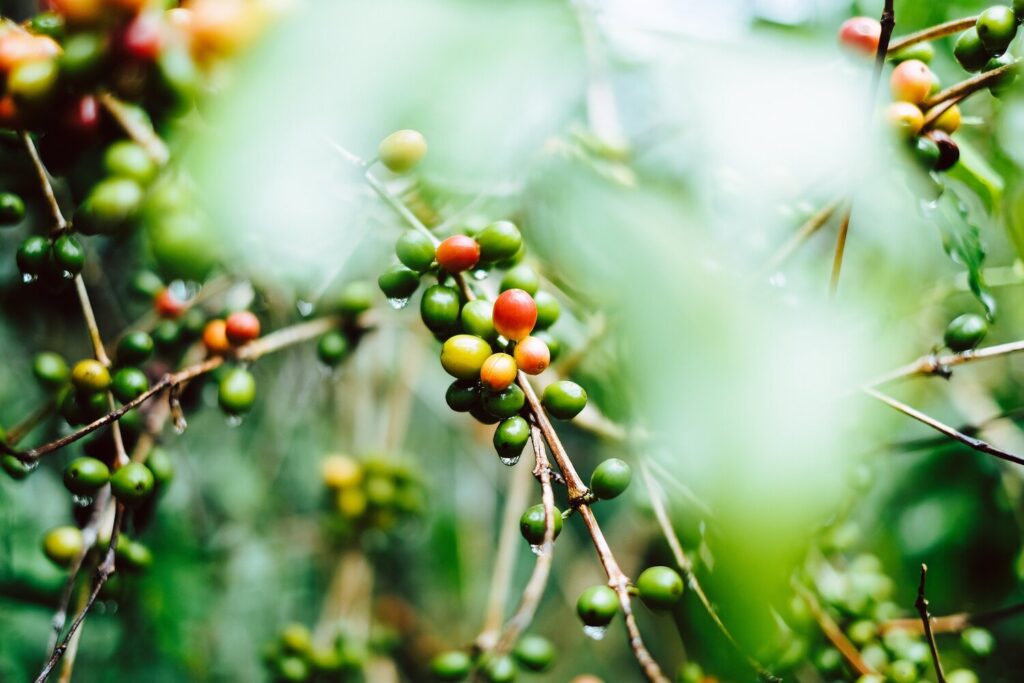
Elevation
The coffee tree typically grows at 2,000 – 7,000 feet in elevation. Higher quality coffees are grown at higher altitudes which result in a denser bean and the possibility of more complex flavors.
Process
Different methods are used to extract the beans/seeds when the cherries are harvested.
Natural Process: dries the cherry around the bean before stripping it. This method creates a fruitier, full-bodied coffee.
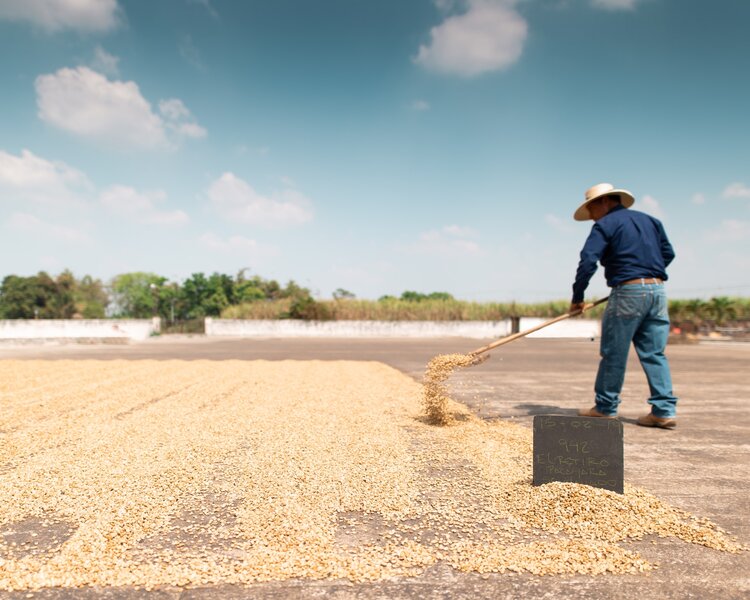
Washed Process: strips the skin and pulp of the fruit from the bean before rinsing. The coffee may have brighter notes and cleaner flavor.
After the seed/bean and cherry are separated the beans are dried to a specific moisture level before the final hulling and transporting.
Variety
Coffea arabica is a species of coffee tree with over 100 different varieties. Typica is an Ethiopian variety that is considered to be the original from which all other varieties have mutated or genetically selected. Some varieties are prized for their flavor attributes while others are grown for higher fruit yield or pest resistance.

Roast
The raw green beans go through phases throughout the roasting process. The application of heat causes chemical reactions that make the beans change color, lose moisture, become darker in color (through sugar browning reactions), expand in size and eventually crack.
Green
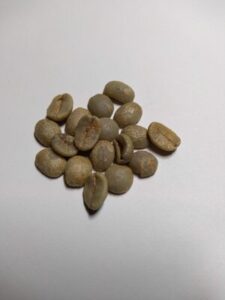
Yellow
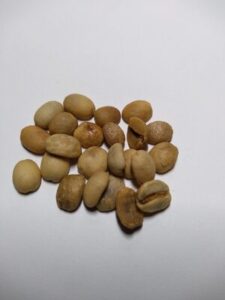
Browning
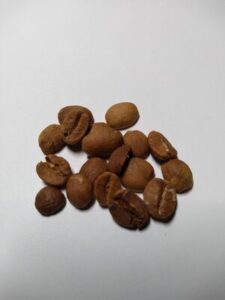
1st Crack

1 Crack Ends
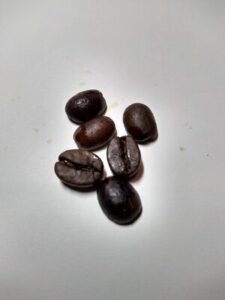
2nd Crack
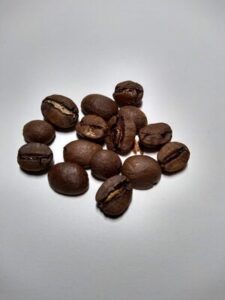
Roast and General Tasting Notes:
Sweet Caramel Roasty
Bright Chocolate Smoke
LIGHT – – – – – – – – -MEDIUM – – – – – – – – – – -DARK
The Coffee Supply Chain
A cup of coffee is not just thanks to the person who brewed it, or the roaster who sold it. For the green beans to arrive at my door, they must first navigate a complicated and delicate journey, starting on a coffee farm across the world. As a roaster, I am always amazed by the hard work and coordination that it took to produce and sell the coffee, long before I had the privilege of roasting it.

Basics
Coffee beans are the seeds of cherries grown on trees. Two species of coffee trees are grown for consumption: Arabica and Robusta. These trees are typically grown at altitudes of 2,000-6,000 feet above sea level where there is ample sun and rich soils. Most coffee producing countries are located near the equator between the Tropic of Capricorn and Tropic of Cancer. The coffee trees blossom producing flowers and then cherries, which are harvested. The cherries are processed down to the seed, sorted, and graded before exporting. Exporters sell to importers and distributors, who in turn sell the coffee seeds (beans) to roasters.
Farming/Processing
100 lbs. of coffee cherries will produce approximately 20 pounds of green coffee seeds. Depending on the location and variety of coffee tree, an average yield per tree would be 2-3 lb. of green coffee per year. Harvesting of the cherries is typically done by hand except in locations where the terrain can allow for mechanical harvesting. Once the cherries are harvested, they are sorted by ripeness and undergo a variety of processing methods to extract the seed. The washed/wet process and the natural/dry process are just two types of processing methods used throughout the industry.

Mostly all of the coffee producing countries are considered to be “developing countries”. A large number of coffee growers are small farmers and typically do not have the ability to process their own coffee cherries. Access to water can also be a hindrance on a small coffee farmer. Smallholder farms will deliver their coffee cherries to a washing station or mill to be processed, sold, and exported. The farmers can also join a co-op who may be able to help them achieve a fair price for their coffee or may have certifications that an individual farmer can not obtain. Large farms and estates may have the ability to have their own processing mill, which will give them greater control over their quality. This will give them an advantage when selling their coffee to exports or importers.
Exporting/Importing/Green Suppliers
Specialty grade coffee is mostly made up of Arabica trees grown above 3,000 ft. Lower altitude grown Arabica and Robusta make up the majority of the commodity market. Commodity coffee is traded on the New York Stock Exchange and the reflected “C-Price” is used as a global base price when coffee is traded between producers and exporters. The current C-Price as of this writing is $1.35 per pound. The term “Specialty Grade” is referring to the quality of the coffee and not necessarily the price because there is no specialty coffee price. Instead, producers are hopefully paid based on the quality of the coffees. Unfortunately, the C-Price can still be used when negotiating price for specialty grade coffee and even fair trade certified coffees.
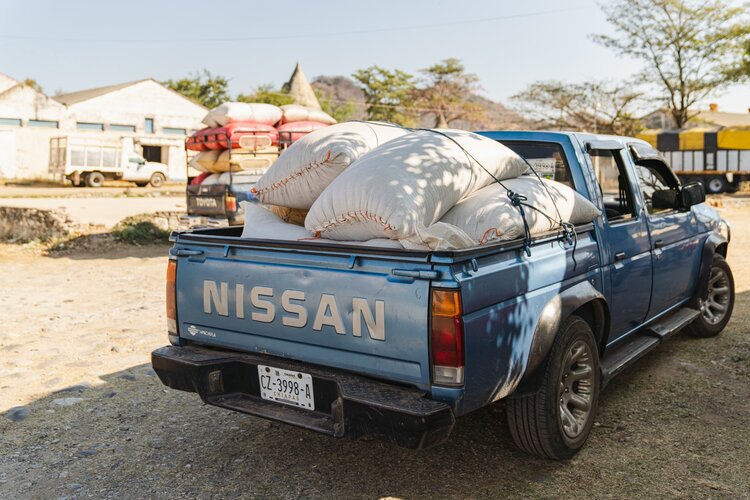
Green coffee is generally sold to exporters, importers, and roasters in 132 lbs. and 152 lbs. jute or burlap bags. Green beans ship from origin countries in shipping containers with approximately 40,000 lbs. of coffee. Different countries can have different ways that coffee is exported, but generally, the coffee from processing stations is sold to origin export companies, who then sell it to foreign importers or green bean suppliers, who then sell it to roasters. Direct relationships can be established between roasters and producers, but ultimately still include some form of import/export company, and the roaster would need to handle a container-sized order.
From me to you
I buy my green beans from a distributor who sells to roasters. This company, Genuine Origin, is owned by Volcafe Specialty. Volcafe has field offices in various origin countries that work directly with the farmers year after year to improve quality, efficiency, and sustainable working practicing. I am being very transparent, just like I think it should be. The more information I am able to acquire on a specific offering, the more likely I am to buy that coffee. I buy my green coffee from this company not only because they offer delicious and fairly traded coffees, but they offer transparency through video reports with the origin offices that talk about sourcing these coffees that we drink. Every time I watch one, I am wholly grounded by the fact that I play such a small role in the coffee supply chain.
Bio: Shane Kilpatrick began roasting in 2016, inspired by the world of flavor he discovered in fresh ground, single origin coffee. His passion for the story of coffee, from the farmer to your cup, is roasted into every batch. HRCR coffee is roasted in a certified kitchen in Reading, PA. We source our green coffee from a sustainably driven distributor with field tech offices in many origin countries. The distributor is working directly with the farmers to produce higher quality coffee. This gives the farmers the opportunity to be paid higher premiums.
Connect with Us:
Follow us on Facebook & Instagram to stay in the loop! We make post about educational topics, featured deals, info on current markets, and current coffee offerings.
Instagram: @hillroadcoffeeroasters
Facebook: @hillroadcoffeeroasters
Email: hillroadcoffeeroasters@gmail.com





